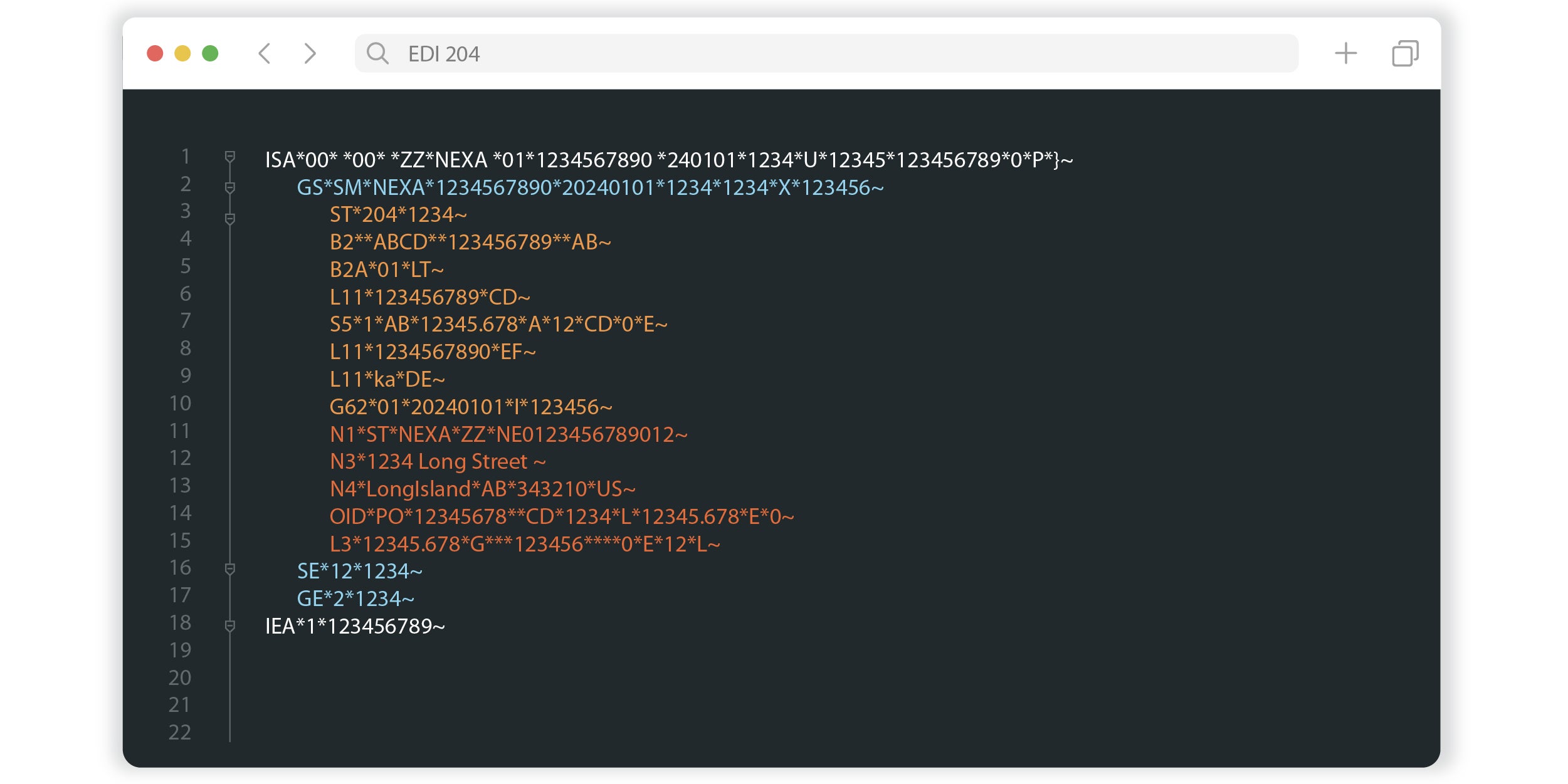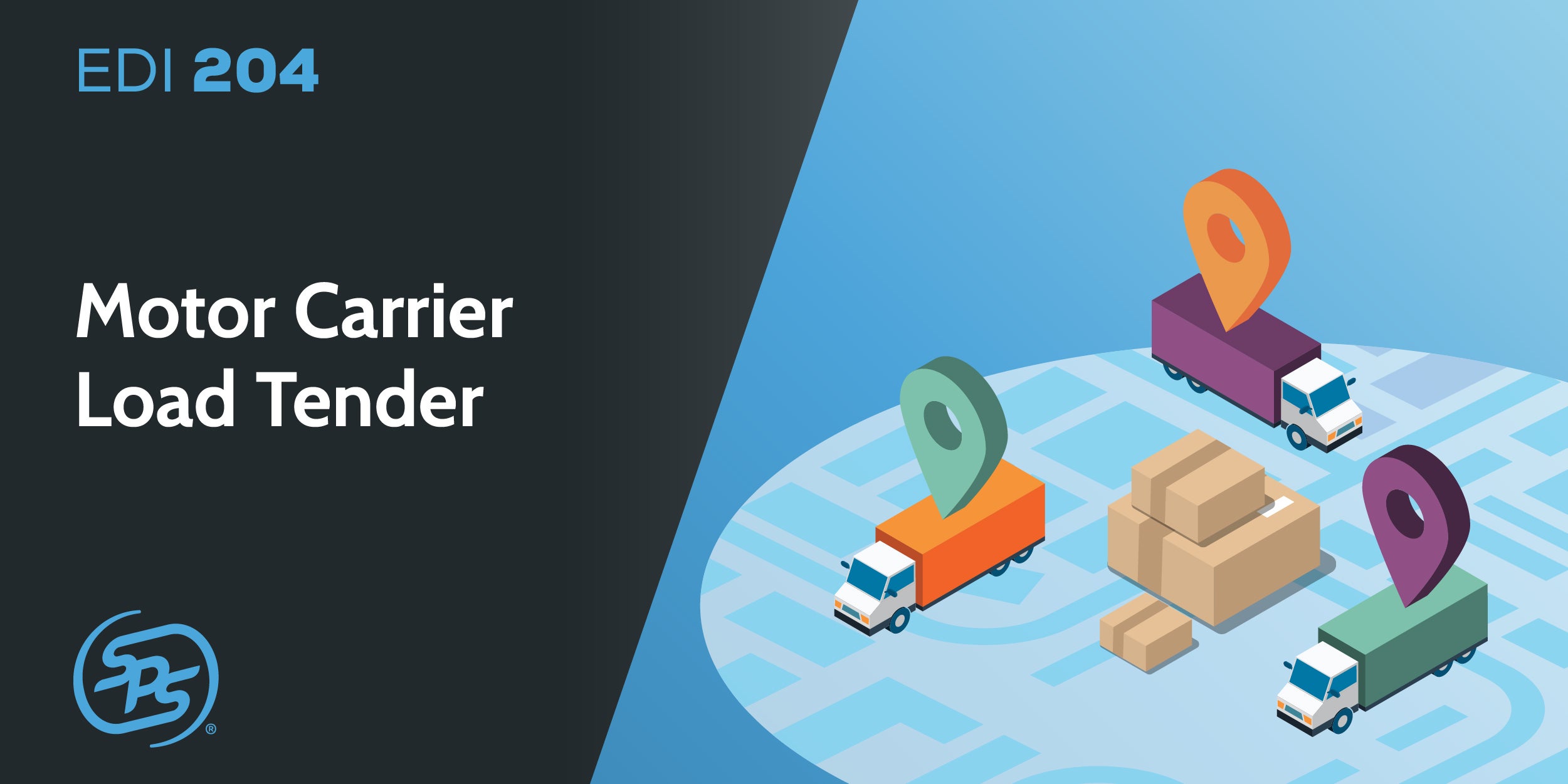The EDI 204 format
The EDI 204 is designed to include all necessary details for tendering a load to a motor carrier. Specific details will vary depending on the implementation guide used by each trading party.

Here’s a general outline of the key segments typically found in an EDI 204 document:
B2: Beginning segment for carrier’s invoice
B2A: Set purpose
L11: Business instructions and reference number
G62: Date/time
MS3: Interline information
N1: Name
S5: Stop-off details
LX: Assigned number
L5: Marks and numbers description
H3: Special handling instructions
How is the EDI 204 used?
The EDI 204 transaction set is crucial for efficient and effective load management in the trucking and transportation industry, providing a standardized method for companies to communicate their shipping needs and for carriers to respond to those needs promptly.
Tendering a shipment:
The primary use of the EDI 204 is for a shipper to tender a load to a carrier. By sending this document, the shipper is essentially asking the carrier if they can pick up and deliver a shipment within specified parameters.
Response by the carrier:
Upon receiving an EDI 204, the carrier can accept the tender by sending back an EDI 990 (Response to a Load Tender) indicating their agreement to the terms, or they might send a counteroffer if adjustments are needed.
Operational efficiency:
The use of the EDI 204 and the automated exchange of this information helps streamline communication between shippers and carriers, reducing the time and potential errors associated with manual processes. It allows for quicker response times, better planning and more efficient use of transportation resources.
Documentation and compliance:
This transaction set also serves as a formal record of the freight tender, which can be important for compliance, auditing and dispute resolution purposes.
Benefits of using EDI 204 Motor Carrier Load Tender
Reduce data entry errors
Improves shipment planning for shippers and carriers.
Helps the carrier understand the requirements of the shipment and its associated costs.
Common issues regarding EDI 204
Shippers have specific requirements for the EDI 204 document and related workflow. Generally, carriers must send an EDI 990 (Response to a Load Tender) for each EDI 204 within a defined time period. The EDI 990 will indicate whether the carrier is accepting or declining the shipment. If the carrier accepts the shipment, then in most cases the carrier will also provide status updates using a 214 Shipment Status EDI message. Shippers generally expect carriers to access and respond to the EDI 204 quickly. Failure to do so can have negative effects on trading partner relationships.
Automate EDI 204 Motor Carrier Load Tender with Full-Service EDI from SPS Commerce

Managing ongoing EDI tasks can be complex and time-consuming. Full-service EDI providers like SPS Commerce deliver EDI technology and associated staffing resources responsible for customizing, optimizing and operating your EDI solution.
SPS communicates directly with your trading partners to manage connectivity, setup, requirements, updates and support efforts. SPS also takes ownership of understanding your trading partner requirements and making map changes.
SPS Fulfillment proactively monitors and optimizes your solution to prevent errors and minimize data entry.
Interested in learning more about our EDI solution?
Additional EDI Resources
Enter a virtual library of information about EDI for suppliers, vendors and distributors to provide you with the product knowledge you need to power your business.
Ultimate List of EDI Transactions
Here are some of the most common documents and transactions that are supported through EDI automation.
Five Top EDI Documents to Automate
When you automate your most-used EDI documents, it can significantly cut down keystrokes and speed up processes.
EDI Glossary
Terminology including retail definitions, order management models, supply chain roles, software and distribution channels.
EDI for Suppliers & Vendors
Discover how leading vendor and supplier businesses are serving their customers better with EDI solutions from SPS Commerce.




